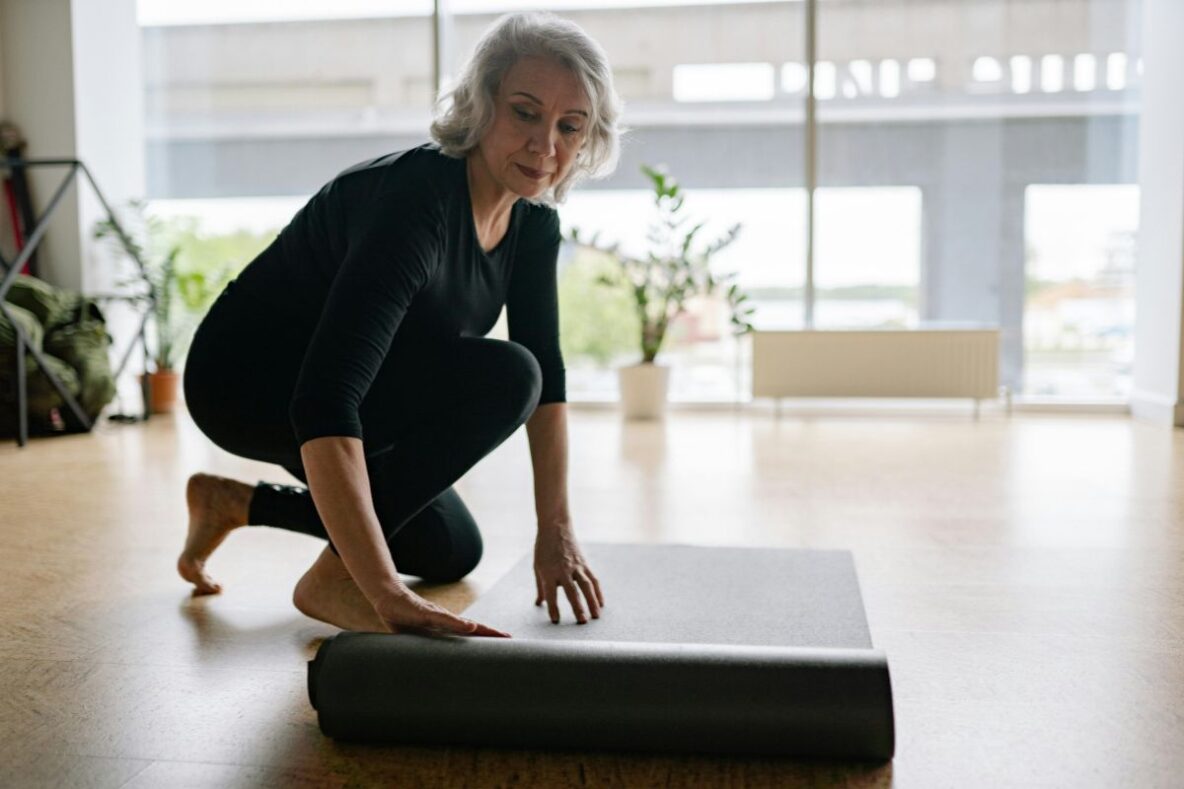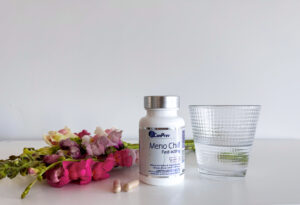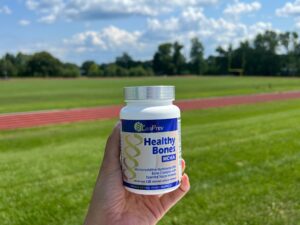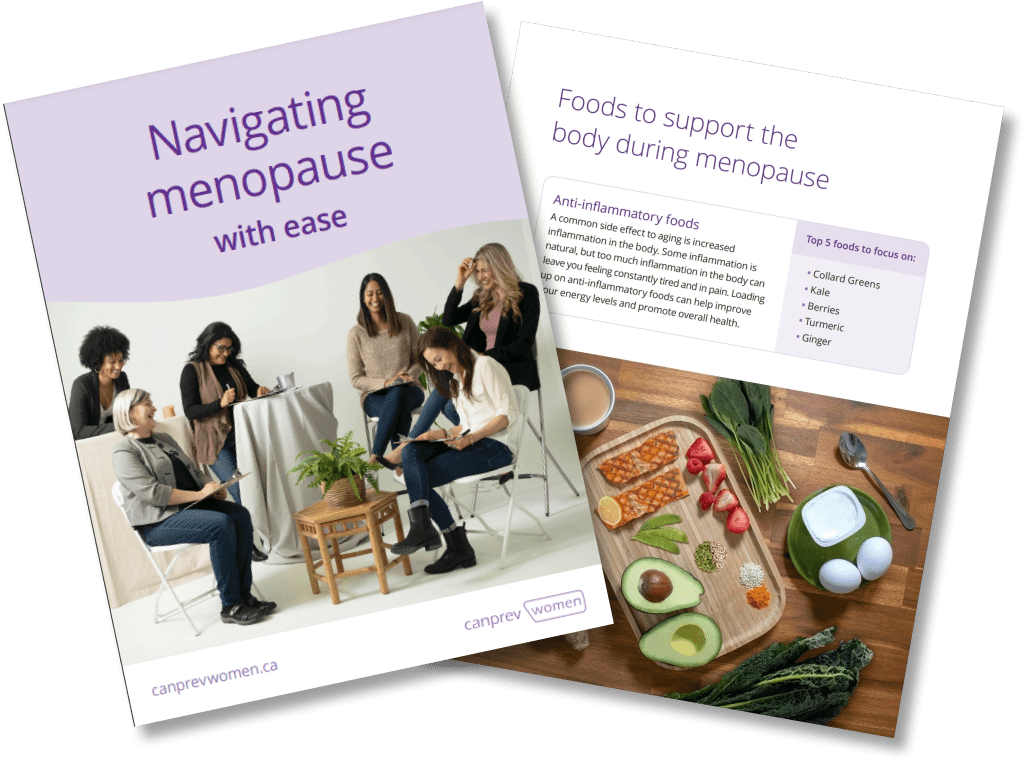Entering menopause can feel like stepping into an entirely new world—one where your body doesn’t always seem to play by the same rules. As you move through this new stage of womanhood, you may start noticing unexpected aches or find it harder to move comfortably. While this may feel daunting, understanding what you’re feeling and why it’s happening, can help you take the necessary steps to find relief.
Understanding the connection between menopause and musculoskeletal pain
The connection between menopause and musculoskeletal pain revolves around hormonal fluctuations. As you transition into menopause, hormonal changes, particularly the decline in estrogen can significantly impact your bones, muscles and joints. Estrogen plays an important role in maintaining bone density and muscle strength. So when these levels dip, it can leave women more vulnerable to aches, stiffness, and discomfort. Here’s how hormonal changes can affect your body during this phase.
Decreased bone density
Estrogen has a protective effect on bones, helping to maintain the balance between bone loss and new bone formation. When estrogen levels drop, the body tends to break down bone tissue faster than it can rebuild it. This imbalance contributes to bone thinning, or what’s known as decreased bone density, making bones more fragile over time.
In fact, women can lose up to 20% of their bone density within 5-7 years after menopause begins, putting them at a higher risk for conditions like osteoporosis, where bones become brittle and more prone to fractures.
Joint pain and stiffness
Low estrogen can make your body less effective at producing collagen, which is crucial for both the cartilage that cushions your joints and the tendons that connect your joints to your muscles.
With lower estrogen levels, collagen production slows, leaving joints more vulnerable to stiffness and discomfort. This can make everyday movements, like getting out of bed or climbing stairs feel more difficult. Additionally, lower estrogen levels can also contribute to increased inflammation in the body, which can further intensify joint discomfort.
Muscle pain and weakness
Lower estrogen levels can lead to a drop in collagen production, which is important for muscle elasticity. Without enough collagen, muscles may become less resilient, and minor activities or movements can lead to muscle strain and discomfort. Hormonal shifts can also affect your body’s ability to efficiently use protein to maintain muscle mass, leading to a feeling of weakness or reduced stamina. You may notice your muscles feeling more sore than usual, even after everyday activities.
In addition to estrogen, testosterone levels also decline during menopause. Since testosterone plays a key role in maintaining muscle health, this drop can further contribute to muscle weakness, fatigue, and a slower recovery time.
One of the lesser-known effects of menopause is the decline in muscle stem cells—cells responsible for generating new muscle tissue. As these stem cells diminish, the body’s ability to produce new muscle is reduced, which can make muscles feel weaker and more prone to fatigue over time.
What does musculoskeletal pain feel like
Many individuals experience different forms of discomfort as musculoskeletal pain affects the body’s muscles, ligaments, tendons, and bones. Here’s a breakdown of the most common types of pain you might encounter and what each one feels like.
Joint pain
This may manifest as a dull ache in areas such as the knees, hips, or hands. You might notice the pain worsening with activity or after sitting in the same position for long periods of time.
Muscle pain
Muscles may feel more fatigued than usual, even after simple tasks. You might also experience aching or cramping in the legs, back, or arms. These can feel like a general soreness or localized discomfort.
Bone pain
This is especially common in the spine, hips, and wrists, where the effects of osteoporosis are often felt the most. Bone pain may be dull, achy, or more localized to a specific area. It can intensify after physical activity or even just from standing or walking for long periods of time.
You may not feel bone density changes immediately, as it’s a silent process. However, signs of decreased bone density may emerge in other ways, such as a loss of height, posture changes, or an increased tendency for fractures from minor falls.
Finding relief from menopausal pain
Menopause brings a lot of changes, but there’s good news — with the right lifestyle changes, you can manage the discomfort and regain control of your body.
Maintain your movement
Movement is one of the best ways to support joint, muscle, and bone health. Exercise not only helps keep your body strong, but it also promotes the release of endorphins, your body’s natural painkillers.
Strength training: Building muscle through strength training helps to counteract muscle weakness. Focus on weight-bearing exercises like squats, lunges, and resistance band exercises to help build and maintain muscle mass, even as testosterone levels decline.
Low-impact activities: For joint stiffness and pain, low-impact activities like walking, swimming, and cycling can help keep joints flexible without putting extra strain on them.
Stretching and yoga: Gentle stretching and yoga can increase flexibility, reduce muscle tension, and improve circulation, making them great for both joint pain and muscle discomfort.
Stay hydrated
Dehydration can make your muscles and joints feel stiffer and more painful, so it’s important to stay well-hydrated. Drinking enough water helps lubricate your joints and keep muscles functioning smoothly.
Here’s a simple rule of thumb: aim to drink half your body weight in ounces of water each day. For example, if you weigh 160 pounds, that’s about 80 ounces of water per day. Drinking herbal teas or adding a slice of lemon to your water can make it easier to drink throughout the day.
For an extra boost, consider adding electrolytes, like CanPrev’s ElectroMag to your hydration routine. Electrolytes help balance fluids in your body, supporting muscle function and keeping your energy levels steady.
Alternating between hot and cold
Sometimes, alternating between hot and cold compresses can be an effective way to manage both inflammation and tension at the same time. Start with a cold compress to reduce inflammation and swelling, then switch to heat to promote circulation and ease tight muscles. This method can be especially helpful for relieving discomfort in areas where inflammation and tension overlap, like the lower back or knees.
When to use cold vs. heat:
- Use cold if the pain is acute, sudden, or associated with swelling or inflammation.
- Use heat if the pain is more chronic, related to muscle stiffness, or when you’re looking for relaxation and comfort.
Supporting your hormonal health from the inside out
During menopause, it’s not just about managing the symptoms—it’s about feeling supported, inside and out. Supplements that nurture your hormonal health can help reduce discomfort and keep you feeling balanced as you navigate this transition.
Meno Chill is a therapeutic blend featuring clinically proven EstroG-100® herbs, KSM-66® ashwagandha and zinc bis-glycinate to help support fluctuating estrogen levels. It works quickly and safely to reduce menopause symptoms such as joint pain, vaginal dryness, hot flashes, night sweats, insomnia, and fatigue.
Calcium Malate Bis-Glycinate 200 is a uniquely chelated and superior form of calcium that is easy to absorb and gentle on the digestive system. Formulated with a therapeutic 200mg dose of elemental calcium in every vegetable capsule.
Healthy Bones MCHA is a highly absorbable, complete bone-building blend with hydrolyzed collagen, magnesium, vitamins D3 and K2, and trace minerals. Formulated with microcrystalline hydroxyapatite (MCHA), the calcium compound found naturally in bones and teeth that give them their structure.
If you’re in search of a vegan option, Healthy Bones Vegan is a complete bone-building formula with calcium, magnesium, vitamins D3 and K2, and trace minerals. It features the world’s most soluble and absorbable source of silicon, LIVING SILICA®, as well as lichen-sourced D3.
Managing musculoskeletal pain during menopause can feel challenging, but with the right approach, you can support your body’s strength and mobility through these natural changes. To help you navigate this journey, we’ve created a comprehensive menopause guide filled with tips and resources to support you along the way.
Sources:
Aging of the Musculoskeletal System: How the Loss of Estrogen Impacts Muscle Strength
Estrogen Regulates the Satellite Cell Compartment in Females
Estrogen throughout a woman’s life stages
Musculoskeletal Disorders and Menopause
Preventing Fractures. General Facts. What Women Need to Know




